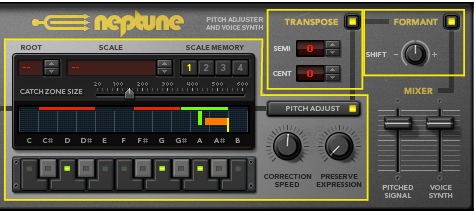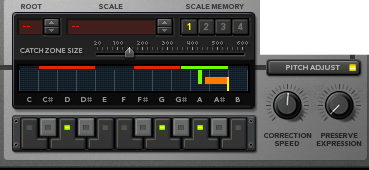Here is where you control the pitch correction settings, including scale, correction speed etc. Here is also where you find the big display where you can view Input Pitch, Target Note and Catch Zone etc. See “Using pitch correction”. for more details.
Here is where you control the pitch shifting parameters. See “Using pitch shifting (Transpose)” for details.
Besides these three main sections, there are also additional parameters for defining audio input characteristics (see “Input signal type”), MIDI control (see “MIDI Input”) and output level control (see “The Output Mixer section”).
The Catch Zones are displayed as red horizontal boxes above each selected key on the virtual keyboard. As soon as a detected Input Pitch lies within a Catch Zone, the Catch Zone box above the corresponding Target Note switches to green. See “Setting Catch Zone Size”.
|
•
|


